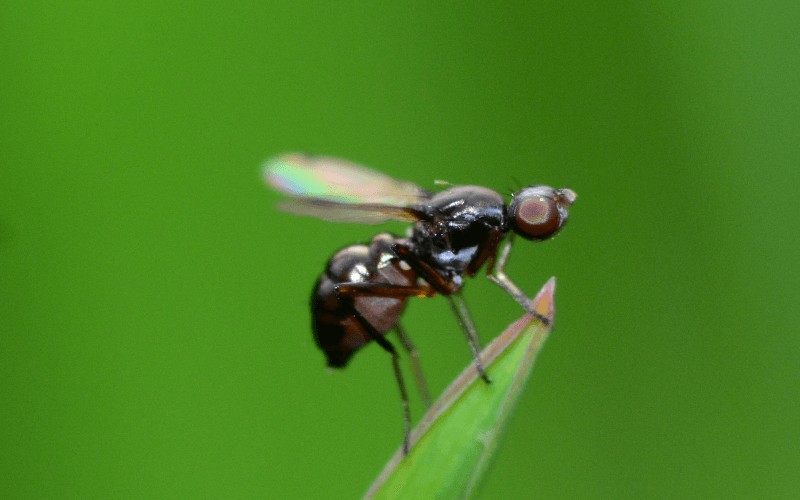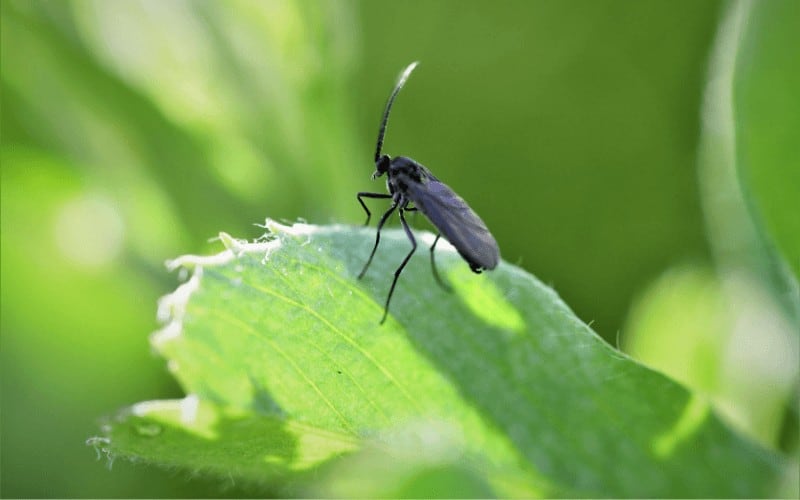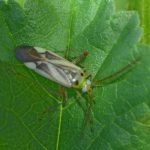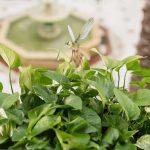A lot of insect pests like spider mites, scale, mealybugs, whitefly, and thrip can come after your house plant, but the worst that can show up to attack your houseplants is the gnat. Today, we're going to show you how to get rid of gnats in houseplants with vinegar.
While most other pests are tiny and cause unnoticeable damage, the gnats are obvious and so is the havoc they wreak.
These gnats are one of the most annoying insects that can infest your plant. The Adult form will disturb you and your plant while the larvae will severely damage the root of your houseplant. Again, this insect, just like the housefly, is a disease vector.
They perch around decaying matter and their limbs pick up fungi and bacteria, and then they land on fruits and food, causing contamination of food which could lead to serious food poisoning.
Table of Contents
What Attracts Gnats To Houseplants?
The smell of fermenting substances attracts gnats. Fruit juice essence and beer cans that are dumped in trash cans can attract them.
Fruits that are overripe or fermenting materials in the house drains can also attract these disturbing insects. It is even more surprising to know that the Carbon (IV) oxide humans breathe out also attracts gnats.
Can Gnats Kill Houseplants?
Even though the adult gnats are not harmful themselves to the plants, they lay eggs on the soil when it is moist.
These eggs hatch into larvae and eat fungi, decaying plant materials, and then the roots of the plants. If you do not discover this infestation on time, you will end up losing that plant.
If, however, you discover this insect early, you can rescue your plant. That said, let's quickly look at how to control gnats with vinegar.
Before we go into how to get rid of gnats in houseplants with vinegar, here are things you will find handy during the process.
- Liquid soap
- Sticky traps (Yellow)
- Plastic bags
- Bleach
- Transparent tape
- Raw potatoes
- A sterilized potting mix
- Semi-opaque or clear plastic cup
- Vinegar made from apple cider
Read Also: How To Protect Fruit Trees From Rodents
How to Get Rid Of Gnats in Houseplants with Vinegar

To take these gnats out of houseplants with vinegar, follow these steps strictly.
Pour one and a half-inch of the vinegar made from apple cider into the semi-opaque or clear plastic cup. This is effective as a gnat trap. You can add two drops of liquid soap to the cup and stir thoroughly.
The reason you should add liquid soap to the vinegar is because gnats are less dense than liquid and can walk on water surfaces without sinking. But the liquid soap breaks water tension, and this will cause the gnats to sink into the trap.
To ensure that your trap attracts the gnats faster, add a ripe cantaloupe or banana. Ensure that they are protruding out of the liquid in the cup. Use the transparent tape to seal the cup. Leave a small opening at the middle of the tape.
Now, take the cup and place it beside the house plant. Monitor it. Ensure that you don’t scare the gnats away when they gather atop the tape.
Soon enough, they will all get into the opening and then to the mix inside the cup and drown. You can now pour the mix away and take a breather from adult gnats.
To attract adult gnats to the cup all the more, place the yellow traps around the house plants.
Cut up your potatoes into smaller chunks and then place them on the soil for 48 or 72 hours. After this time elapses, pick the potatoes and check if something chewed them.
If you found that gnat larvae have infested the soil, gently take the plant out of the pot. Get rid of the surrounding soil, but make sure you do not disturb the roots. Pour the soil into a sealed bag and throw it away.
Don’t add the infected soil to your compost. Trash the soil and take the soil out to avoid re-infestation. Disinfect both the plant pot and your trash can, then repot the houseplant. Ensure that you use a potting mix that you have sterilized properly.
To disinfect your pot, mix 9 parts of water with 1 part of bleach, pour the mix into the pot and leave it to disinfect for 10 minutes. Wash the pot after ten minutes with boiling water and soap, then rinse thoroughly.
How to Prevent Gnats from Infesting Your Plants

1. Reduce Moisture Content
Always pay attention to the amount of water you add to your plant. Gnats like moist environments and cannot thrive in dry places. So, do not be quick to water your plant.
Resist from watering your plant as long as possible without harming it. If the larvae stay for long in a dry soil, they will die.
Ensure that your pot is nowhere near the trash can. Also, get rid of dead plants and debris daily as these also attract gnats and then act as food for the larva that would hatch from the eggs.
Again, if the soil is dry, it will discourage the adult gnats from laying their eggs on the soil.
2. Make Use of Mosquito Dunks
You can also use mosquito dunks to tackle gnats. Gardeners use the mosquito dunks to keep away mosquito larva from fishponds, animal thorough and fountains.
The dunks are actually pellet with a type of beneficial bacteria known as Bacillus thuringiensis. These bacteria are useful in killing the larva of insects like gnats, fruit flies, and mosquitoes.
3. Seal Drainage Holes
On a norm, gnats stay on top of the pot, but it is possible for them to get down to the underside where they can also lay eggs.
When you notice this, use a piece of fabric to cover the drainage hole. This will not grant gnats access but can allow water to flow out.
Read Also:
- Does Vinegar Kill Powdery Mildew?
- How to Use Diatomaceous Earth in Potted Plants
- How Long Does It Take for Diatomaceous Earth to Kill Gnats?
- How To Kill White Fungus On Palm Trees
- Does Baking Soda Kill Powdery Mildew?
- How To Get Rid Of White Fungus On Plants
Conclusion | Can Vinegar Kill Gnats?
How to get rid of gnats in houseplants with vinegar is what everyone interested in house planting should know. Getting rid of gnats is not a one-off activity. It requires consistency.
While it is quite easy to trap the adults, you still need to make fresh traps regularly because the gnats come in cycles. It is always better to prevent infestation than to handle it when it comes.
The damage caused by the larva of these gnats will look like the damage caused by any disease that affects the roots. You may find that the leaves of your plants are turning yellow and dropping.
The plant might also stop growing or have stunted growth. When the infestation is too bad, total wilting of the pant might happen.




